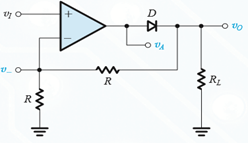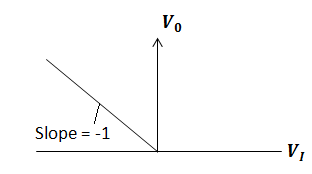This set of Electronic Devices and Circuits Multiple Choice Questions & Answers (MCQs) focuses on “Rectifiers”.
1. Which of the following isn’t a type of rectifier?
a) Precision Half-wave Rectifier
b) Bridge Rectifier
c) Peak Rectifier
d) None of the mentioned
View Answer
Explanation: All of the mentioned are different types of a rectifier.
2. For a half wave or full wave rectifier the Peak Inverse Voltage of the rectifier is always
a) Greater than the input voltage
b) Smaller than the input voltage
c) Equal to the input voltage
d) Greater than the input voltage for full wave rectifier and smaller for the half wave rectifier
View Answer
Explanation: The peak input voltage is smaller than the input voltage due to the presence of diode(s). A single diode reduces the output voltage by approximately 0.7V.
3. For a half-wave rectifier having diode voltage VD and supply input of VI, the diode conducts for π – 2Θ, where Θ is given by
a) tan -1 VD/VI
b) tan-1 VD/VI – VI
c) sin-1 VD/VI
d) sin-1 VD/VI – VI
View Answer
Explanation: The diode doesn’t conducts when VD ≥VI . Hence Θ = sin-1 (D/VI).
4. Bridge rectifier is an alternative for
a) Full wave rectifier
b) Peak rectifier
c) Half wave rectifier
d) None of the mentioned
View Answer
Explanation: Bridge rectifier is a better alternative for a full wave rectifier.
5. Which of the following is true for a bridge rectifier?
a) The peak inverse voltage or PIV for the bridge rectifier is lower when compared to an identical center tapped rectifier
b) The output voltage for the center tapped rectifier is lower than the identical bridge rectifier
c) A transistor of higher number of coil is required for center tapped rectifier than the identical bridge rectifier
d) All of the mentioned
View Answer
Explanation: All of the given statements are true for a bridge rectifier.
6. The diode rectifier works well enough if the supply voltage is much than greater than 0.7V. For smaller voltage (of few hundreds of millivolt) input which of the following can be used?
a) Superdiode
b) Peak rectifier
c) Precision rectifier
d) None of the mentioned
View Answer
Explanation: For the supply voltages less than 0.7V super diodes are used.
7. A simple diode rectifier has ‘ripples’ in the output wave which makes it unsuitable as a DC source. To overcome this one can use
a) A capacitor in series with a the load resistance
b) A capacitor in parallel to the load resistance
c) Both of the mentioned situations will work
d) None of the mentioned situations will work
View Answer
Explanation: A capacitor is parallel with a resistor can only makes ripples go away. Series connection will become equal to an open circuit once the capacitor is fully charged.
8. Consider a peak rectifier fed by a 60-Hz sinusoid having a peak value Vp = 100 V. Let the load resistance R = 10 kΩ. Calculate the fraction of the cycle during which the diode is conducting
a) 1.06 %
b) 2.12 %
c) 3.18%
d) 4.24%
View Answer
Explanation: w Δt ~ √(2Vr/Vp)
Θ = √(2 X 2/100)
Θ = 0.2 rad or 3.18% of the cycle
9. The op amp in the precision rectifier circuit is ideal with output saturation levels of ±12 V. Assume that when conducting the diode exhibits a constant voltage drop of 0.7 V. Find V– when VI is -1V.

a) 0V
b) 0.7V
c) 1V
d) 1.7V
View Answer
Explanation: VI = -1v
Vo = 1v
VA = 1.7v
V– = 0v
Virtual gnd as negative feedback is closed through R.
VI > 0 D1 conducts D2 cutoff.
VI < 0 D2 conducts D1 cutoff.
V0 ⁄ VI = -1.

10. The op amp in the precision rectifier circuit is ideal with output saturation levels of ±12 V. Assume that when conducting the diode exhibits a constant voltage drop of 0.7 V. Find V0 when VI is 2V.

a) 0V
b) 0.7V
c) 1V
d) 1.7V
View Answer
Explanation: VI = 2v
Vo = 0v
VA = -0.7v
V– = 0v
Virtual gnd as negative feedback is closed through R.
VI > 0 D1 conducts D2 cutoff.
VI < 0 D2 conducts D1 cutoff.
V0 ⁄ VI = -1.

Sanfoundry Global Education & Learning Series – Electronic Devices and Circuits.
To practice all areas of Electronic Devices and Circuits, here is complete set of 1000+ Multiple Choice Questions and Answers.
If you find a mistake in question / option / answer, kindly take a screenshot and email to [email protected]
